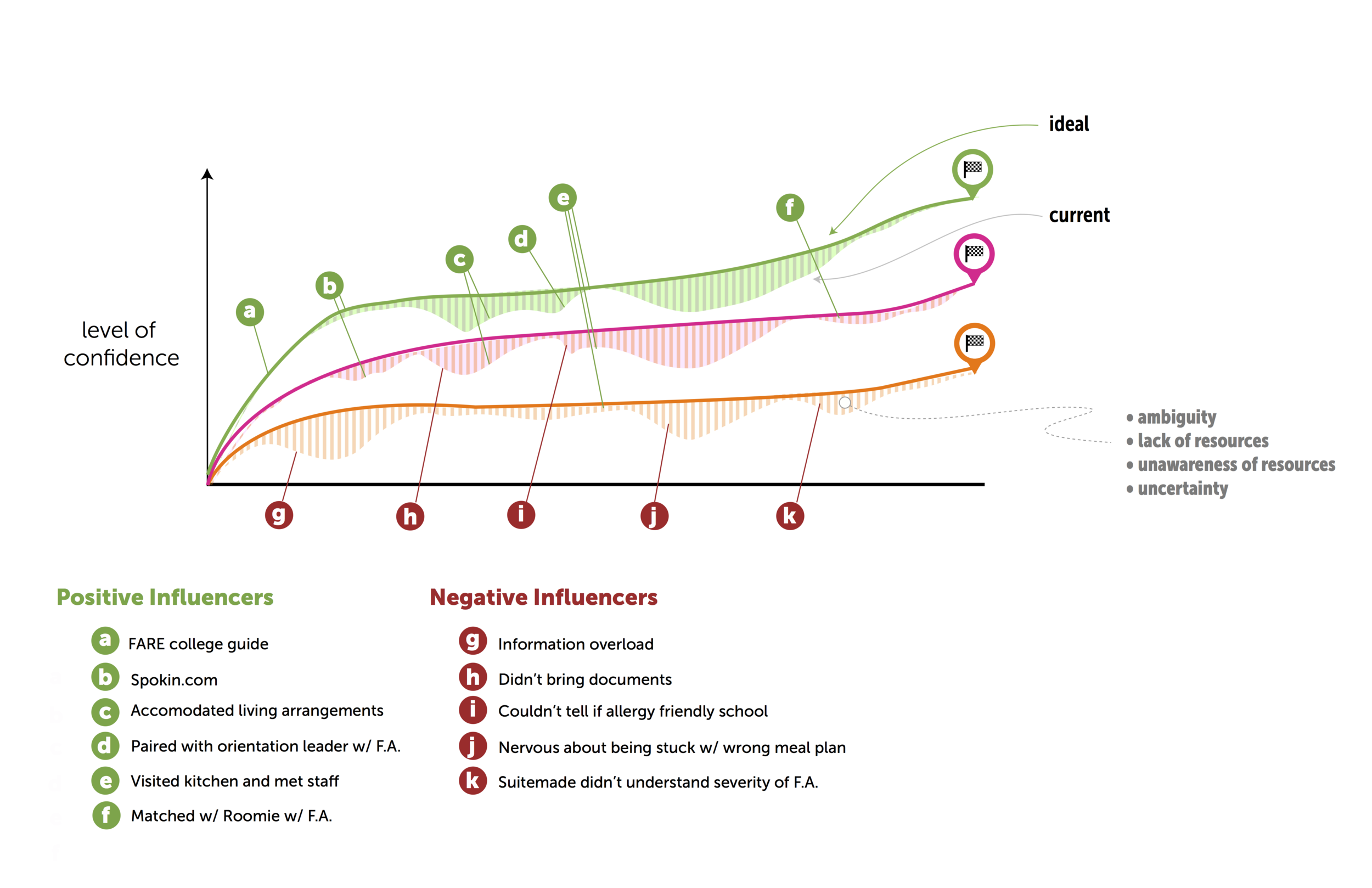The Path to the Big Picture
Through a two-year collaboration with Northwestern Medicine, our Service Design Studio reimagined the transition into college for food-allergic students. Creating change across disparate touch points, in a way that met the needs of such a diverse group, was an exercise in careful listening, platform planning, and practical advocacy. Our solution set was recognized by the Design Management Institute with a Design Value Award
Navigating the Labyrinth
Going to college is not a simple process to begin with. Every part of your life needs to be taken apart, packed up, and reassembled tens, hundreds, or thousands of miles away. For students with food allergies, this process is not just an opportunity for self-determination, but the struggle to make choice a reality. In order to create change, we had to burry ourselves in the world of not just students, but the often-disjointed ecosystems that surround them.
No Right Answer
"Students with food allergies", "food-allergic students", "those kids". There was no singular identity that applied to this massive cohort (roughly 8% of children have food allergies). In more than just name, this group is diverse, there is no one correct journey for someone with food allergies approaching college. We saw that the threshold for enabling safe choice for each student varied wildly, as did dozens of other variables. While we could not offer a viable single path, we could design a tool to enable students to understand and determine their own path, and fluidly communicate with their support system.
Paper is King
Prototyping a scalable, inter-departmental, inter-collegiate, multi-million-user platform is a unique kind of challenge, especially with next-to-no budget. Instead of spending resources on completeness, we brought relevant experiences to stakeholders, so that they could provide expert feedback. Through extensive iteration and low-fidelity testing, we were able to learn quickly, if a bit scrappily. Our service platform gave students unified access to otherwise disparate campus food allergy resources. By enabling early discovery of offerings and key information, students can create and share a modular plan from their phones. Meanwhile, schools can best leverage existing investments and track engagement to determine where to allocate future capital.



